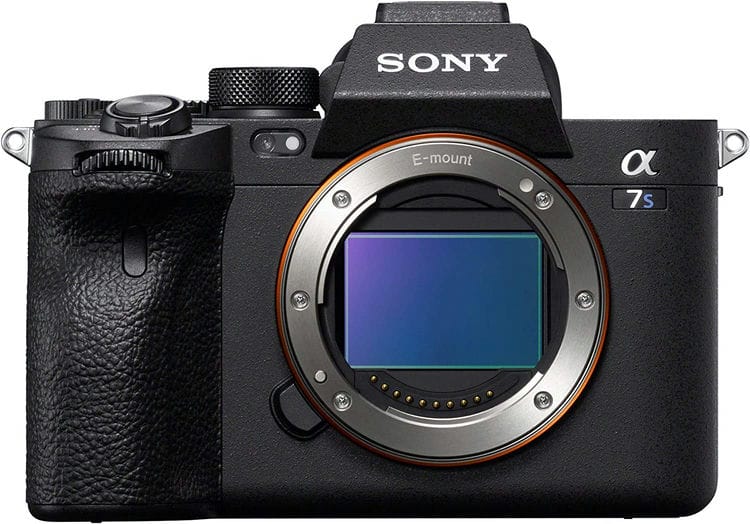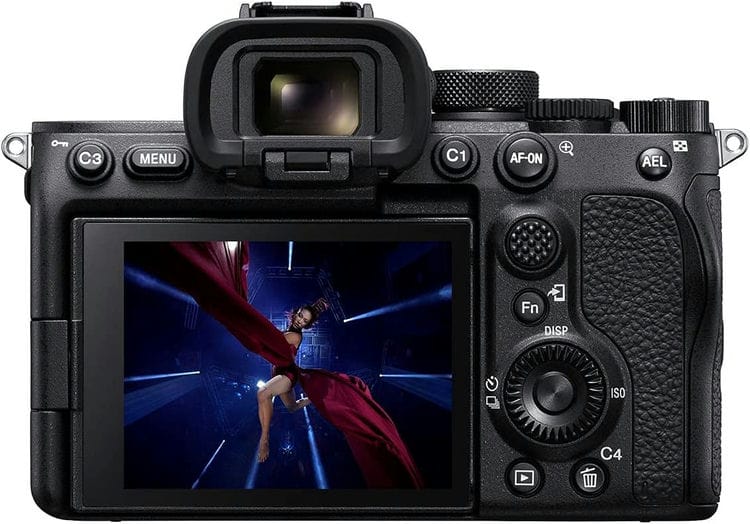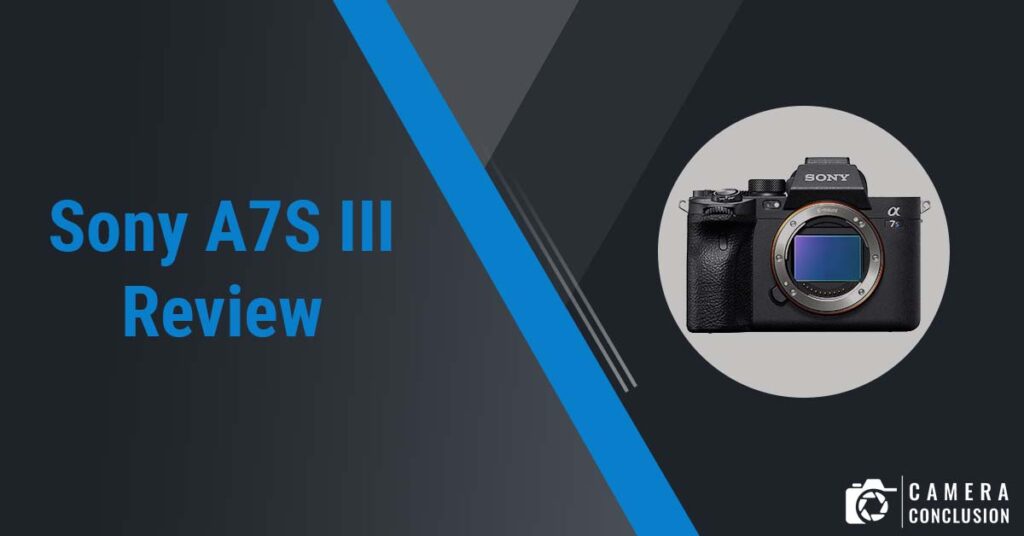Index
The Sony A7S III is a high-performance mirrorless camera that is well-known for its exceptional low light performance and video capabilities. It features a 12.1 megapixel full-frame image sensor and can shoot 4K video at up to 120 frames per second. It also has a fast and accurate autofocus system, and a robust set of features and customization options. It is a popular choice among professionals and enthusiasts alike, and has received widespread praise for its image quality and versatility.

- 12.1 megapixel full-frame image sensor
- BIONZ XR image processing engine
- ISO range of 50-409600
- 5-axis in-body image stabilization
- 9.44 million dot OLED electronic viewfinder
- 3.0 inch, 1.44 million dot touchscreen LCD display
- 4K video recording at up to 120 frames per second
- 10 bit 4:2:2 internal recording
- 16-bit raw output over HDMI
- Dual card slots (SD and CFexpress Type A)
- USB-C port
- Wi-Fi and Bluetooth connectivity
- Weather-sealed body
KeyFeatures
- Excellent low light performance: It has a high-resolution image sensor and a wide ISO range, making it capable of capturing clear and detailed images in a variety of lighting conditions.
- Outstanding video capabilities: It can shoot 4K video at up to 120 frames per second, with 10 bit 4:2:2 internal recording and 16-bit raw output over HDMI. It also has a variety of creative video features and functions, including slow motion, time-lapse, and S-Log3/S-Gamut3 support.
- Fast and accurate autofocus: It has a fast and accurate autofocus system that is capable of tracking fast-moving subjects and maintaining focus even in low light conditions.
- Robust set of features and customization options: It has a variety of customization options and creative features, including a variety of creative picture profiles, the ability to shoot in both JPEG and raw format, and a range of creative filters and effects.
- Durable and reliable design: It has a weather-sealed body that is built to withstand challenging shooting conditions. It also has a robust construction and a variety of connectivity options, including Wi-Fi and Bluetooth.
- Excellent low light performance
- Outstanding video capabilities
- Fast and accurate autofocus
- Robust set of features and customization options
- Durable and reliable design
- Relatively high price point
- Limited battery life
- No built-in flash
- Some users may find the menu system confusing or difficult to navigate
Build and Handling
The Sony A7S III is a full-frame mirrorless camera that is known for its impressive low light performance and video capabilities. It has a 12.1 megapixel sensor and can shoot 4K video at up to 120 frames per second. It also has a range of features that make it well-suited for professional photographers and videographers, including a high-resolution viewfinder, a robust autofocus system, and dual card slots.
In terms of build, it is made of a durable magnesium alloy and is dust and moisture resistant. It has a large hand grip that provides a comfortable and secure hold, and the camera body is relatively lightweight, making it easy to carry around for extended periods of time.
One of the standout features of the A7S III is its high-resolution electronic viewfinder, which has a resolution of 9.44 million dots. This allows you to see a clear and detailed preview of your shots, and the viewfinder also has a high refresh rate, making it easy to follow fast-moving subjects.

It also has a robust autofocus system that uses 693 phase-detection points and 425 contrast-detection points to quickly and accurately focus on your subject. This system is further enhanced by the camera’s Real-time Tracking and Real-time Eye AF capabilities, which allow you to track moving subjects and keep the focus locked on their eyes.
In terms of handling, the A7S III is relatively intuitive to use. It has a large, customizable control dial that allows you to quickly adjust settings such as aperture and shutter speed, and it has a variety of buttons and dials that can be customized to suit your specific shooting needs. The camera also has a touchscreen LCD that allows you to easily navigate through menus and make adjustments to settings.
Overall, it is a high-performance camera that is well-suited for professional photographers and videographers. It has a durable build, a high-resolution viewfinder, and a robust autofocus system, and it is relatively easy to handle.
It is a high-performance camera known for its excellent low-light performance and fast autofocus. It has a 12.1 megapixel full-frame CMOS sensor and a BIONZ X image processor, which work together to produce sharp, detailed images with low noise levels. The camera can capture 4K video at up to 120 frames per second, and it has a wide dynamic range, allowing it to capture a wide range of tones and colors in a single image. It also has fast and accurate autofocus, thanks to its 693-point hybrid autofocus system. Overall, it is a top-performing camera that is well-suited for a wide range of applications, including video production, event photography, and more.
Auto-Focus
It is equipped with a hybrid autofocus system that combines both contrast-detection and phase-detection autofocus technologies. This system uses 693 autofocus points that are spread across the frame, allowing for precise and accurate autofocus performance. The camera also has real-time tracking and real-time eye AF capabilities, which allow it to maintain focus on moving subjects and to prioritize the focus on a subject’s eyes, respectively. In addition, it has a high-speed continuous shooting mode that can capture up to 10 frames per second with continuous autofocus and auto exposure. Overall, the autofocus performance of the Sony A7S III is fast and reliable, making it well-suited for a wide range of photography and videography applications.
Image Stabilization
Sony A7S III has built-in 5-axis in-body image stabilization (IBIS), which helps to reduce the appearance of camera shake in photos and videos. This system works by using gyroscopic sensors to detect movement and then shifting the image sensor to compensate for it.
The image stabilization of the Sony A7S III is effective at reducing blur caused by small amounts of camera shake, and it can be particularly useful when shooting in low light or when using longer focal lengths.
It is important to note that the image stabilization of the Sony A7S III is not a replacement for a tripod or other stabilizing equipment, but rather it is an additional tool that can help to improve the sharpness and stability of your photos and videos.
Image Quality
Sony A7S III is known for its excellent image quality, which is a result of its high-resolution 12.1 megapixel full-frame CMOS sensor and BIONZ X image processor. The camera is capable of capturing detailed, sharp images with low noise levels, even in low light conditions.
It has a wide dynamic range, allowing it to capture a wide range of tones and colors in a single image, and it also has a wide color gamut, which allows it to reproduce a wide range of colors accurately. It is also capable of capturing 4K video at up to 120 frames per second, which allows for smooth, detailed video footage with minimal motion blur. Overall, the image quality of the Sony A7S III is exceptional and well-suited for a wide range of photography and videography applications.
Battery Life
The battery life of the Sony A7S III is good, but not exceptional. According to Sony, the camera has a battery life of approximately 610 shots when using the viewfinder, or approximately 660 shots when using the LCD screen. These numbers are based on CIPA (Camera & Imaging Products Association) standards, which are industry-standard testing procedures that aim to simulate real-world shooting conditions.
In practice, the battery life of the Sony A7S III will vary depending on a number of factors, including the type of shooting you are doing (e.g., stills or video), the settings you are using (e.g., image stabilization, autofocus, etc.), and the ambient temperature. It is always a good idea to have at least one extra battery on hand, especially if you are planning to shoot for an extended period of time.
Value for Money
It is a high-performance camera that is well-suited for a wide range of photography and videography applications. It has a number of features and capabilities that make it a very appealing camera, including excellent low-light performance, fast and accurate autofocus, 5-axis in-body image stabilization, and the ability to capture 4K video at up to 120 frames per second. These features come at a cost, however, and it is not a budget-friendly camera. It is priced at the high end of the market, which may make it difficult for some consumers to justify the cost.
That being said, it is a professional-grade camera that is built to last and to deliver excellent performance. If you are a professional photographer or videographer, or if you are a serious enthusiast who is willing to invest in a high-quality camera, then the Sony A7S III may be a good value for you. It is a versatile camera that is capable of producing stunning images and video, and it is likely to be a solid investment for many years to come.
FAQs
Verdict
The Sony A7S III is a high-performance camera that is well-suited for a wide range of photography and videography applications. It has a number of impressive features, including excellent low-light performance, fast and accurate autofocus, 5-axis in-body image stabilization, and the ability to capture 4K video at up to 120 frames per second. The camera has a solid build quality and is designed to withstand the rigors of professional use.
One potential downside of the Sony A7S III is its price, which is at the high end of the market. This may make it difficult for some consumers to justify the cost. However, if you are a professional photographer or videographer, or if you are a serious enthusiast who is willing to invest in a top-quality camera, then it is likely to be a good value for you. It is a versatile camera that is capable of producing stunning images and video, and it is likely to be a solid investment for many years to come.
Sony A7S III vs Sony A7S II
The Sony A7S III is the successor to the Sony A7S II, and it represents a significant improvement over the previous model in several ways. Some of the key improvements of the Sony A7S III compared to the A7S II include:
- Higher resolution: The Sony A7S III has a 12.1 megapixel full-frame CMOS sensor, which is a significant increase over the 12.2 megapixel sensor of the A7S II. This means that the A7S III is capable of capturing more detailed, higher-resolution images than its predecessor.
- Faster autofocus: The Sony A7S III has a hybrid autofocus system that combines both contrast-detection and phase-detection autofocus technologies. This system is faster and more accurate than the autofocus system of the A7S II, which was based on contrast-detection only.
- Improved video performance: The Sony A7S III can capture 4K video at up to 120 frames per second, which is a significant increase over the 4K/30 fps capability of the A7S II. The A7S III also has improved image stabilization and a wider dynamic range, which can result in higher-quality video footage.
- Improved build quality: The Sony A7S III has a more robust and durable build than the A7S II, with better weather-sealing and a more comfortable grip.
Overall, the Sony A7S III represents a significant improvement over the A7S II in terms of image quality, autofocus performance, video capabilities, and build quality. It is a more versatile and capable camera that is well-suited for a wide range of photography and videography applications.
